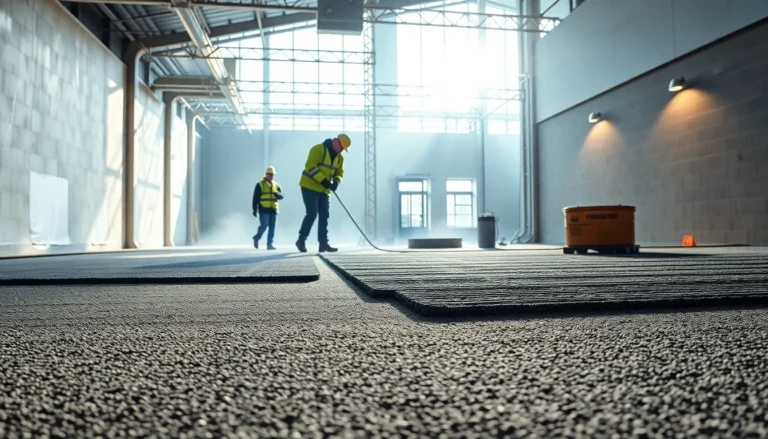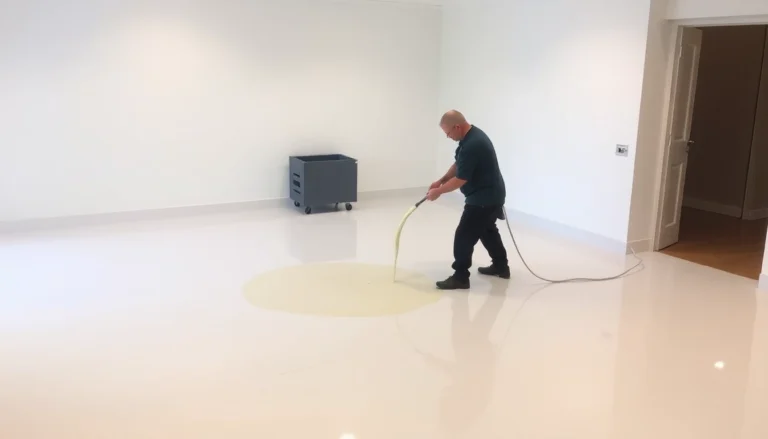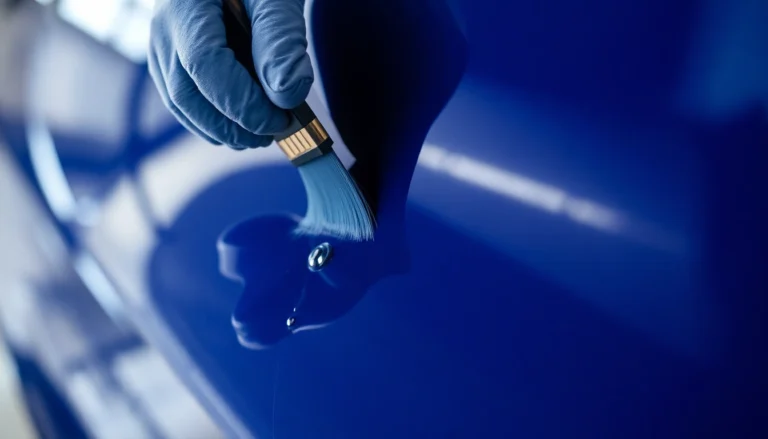
Understanding the Importance of Chimney Repairs
The chimney is a critical component of any property that employs a fireplace, stove, or venting system. Over time, exposure to elements, environmental factors, and age can lead to various forms of damage, compromising both the safety and efficiency of your chimney system. Recognizing the importance of regular chimney inspections and timely repairs cannot be overstated—not only to prevent costly future repairs but also to ensure the safety of your home and its occupants. A well-maintained chimney diverts hazardous gases, prevents structural deterioration, and preserves the aesthetic value of your property.
For homeowners in the UK, where weather conditions can often accelerate chimney wear, engaging with professional chimney repair services is a wise investment. chimney repairs are more than just aesthetic upgrades; they are vital safety measures. Effective repairs safeguard your home against potential fire hazards, Carbon monoxide leaks, and structural collapse. This section explores why chimney repairs should be high on your property maintenance checklist.
Signs Your Chimney Needs Repair
Identifying when your chimney requires repair is the first step toward preventing major issues. Early detection can save significant costs and mitigate risks. Some common warning signs include:
- White or rust-colored staining on the chimney: Often indicates moisture infiltration or leaks.
- Cracks or gaps in masonry: Visible damage typically points to deterioration, requiring professional intervention.
- Damaged or missing mortar joints: Can lead to structural instability and allow water ingress.
- Smoke spillage inside the home: Suggests improper drafting or blockage, which may be due to chimney damage.
- Leaking or water penetration: Water in the chimney or chimney breast indicates leaks needing urgent repair.
- Unusual odors or smoke smells indoors: Sign of leaks or blockages in the flue system.
- Persistent chimney leaks during rainfall: Points to compromised flashing or flaunching.
Regular inspection, especially before winter or after severe weather events, can help identify these signs early. If you notice any of these issues, consulting with experienced chimney repair specialists ensures the problem is addressed promptly, maintaining your home’s integrity and safety.
Common Chimney Damage Types
Understanding the types of damage that commonly afflict chimneys in the UK allows homeowners to better anticipate potential issues and implement preventative measures. The main categories include:
- Repointing and mortar degradation: Over time, mortar joints deteriorate due to weathering, leading to loose stones or bricks, water ingress, and structural instability.
- Cracks and spalling: Cracks can develop from thermal expansion, freeze-thaw cycles, or foundational movement. Spalling occurs when mortar or brick surface flakes away, exposing internal structures.
- Leaking and moisture damage: Water penetration is one of the most damaging issues, causing frost damage, mold, and wood rot near the chimney stack.
- Storm and weather-related damage: High winds, heavy rain, and snow can dislodge bricks or damage flashing, creating entry points for water and debris.
- Storm damage and structural failure: Severe storms can cause collapses or dislodge the chimney entirely if neglected or poorly maintained.
- Chimney liner deterioration: Older liners made of clay or concrete may crack or degrade, reducing efficiency and increasing risk of fire or gas leaks.
Identifying these damages early allows for targeted repairs, restoring chimney integrity and preventing further issues. Regular maintenance and expert inspections are vital in minimizing these risks.
Risks of Ignoring Chimney Issues
Neglecting necessary chimney repairs poses significant safety and financial risks. These include:
- Fire hazards: Cracked or blocked chimneys can cause dangerous creosote buildup or house fires.
- Carbon monoxide poisoning: Damaged or blocked flues can leak deadly gases into the living space.
- Structural collapse: Over time, unchecked deterioration can lead to partial or total chimney failure, risking injury or property damage.
- Water damage and mold growth: Water infiltration promotes mold, which can affect indoor air quality and cause wood rot.
- Decreased energy efficiency: Damaged chimneys impair draft, leading to increased fuel consumption and higher utility bills.
- Legal and insurance issues: Failing to maintain the chimney can breach building regulations, complicating insurance claims after damages.
Regular inspection and maintenance are essential to mitigate these risks. Homeowners should prioritize prompt repair of any issues to ensure continued safety, efficiency, and compliance with local building codes.
Effective Techniques for Chimney Repairs
Repointing and Replacing Mortar
Repointing involves removing deteriorated mortar from between bricks or stones and applying fresh mortar to restore the structural integrity of the chimney. This technique is fundamental for long-term maintenance, especially in the face of weathering and freeze-thaw cycles common in UK climates. Proper repointing not only reinforces the chimney but also enhances its weather resistance.
The process entails carefully chiseling out the old, loose mortar, cleaning the joints thoroughly, and then filling them with a durable, weatherproof mortar mix—often a lime-based mortar for historic or older constructions. Skilled chimney repair professionals ensure the mortar is matched for color, texture, and flexibility, avoiding cracking or joint failure over time.
Regular repointing avoids the need for complete rebuilds, saving homeowners significant costs. It’s recommended every 10-15 years depending on exposure and condition.
Chimney Rebuilding and Relining
When damage is extensive—such as large cracks, compromised structural integrity, or degraded liners—rebuilding or relining becomes necessary. Rebuilding involves dismantling and reconstructing portions of the chimney with new bricks and mortar, restoring both stability and appearance. Relining, on the other hand, involves installing a new internal liner, which can be made from stainless steel, clay, or other materials, to improve safety and efficiency.
Chimney relining is especially crucial for older clay-lined chimneys that have cracked or eroded. This process prevents gases from leaking into the structure and helps maintain proper drafting. Modern relining options—such as flexible stainless steel liners—are less invasive and offer long-lasting solutions.
Both rebuilding and relining require a high level of expertise to ensure safety standards are met, and they often qualify for insurance or government grants, depending on the property and region.
Fixing Leaks and Storm Damage
Addressing leaks caused by damaged flashing, deteriorated flaunching, or cracked crowns is vital to maintaining chimney integrity. Flashing, which seals the junction between the chimney and roof, often deteriorates due to weather or poor installation, leading to leaks that can cause internal damage.
Repairing these elements involves removing old flashing, sealing joints, and installing new, weatherproof materials. For storm damage, such as dislodged bricks or toppled chimney stacks, immediate emergency repairs are required to prevent further damage and safety hazards.
Skilled repairs, often combined with roof repairs, ensure the entire system functions correctly and remains weatherproof, preserving the property’s value and safety.
Choosing the Right Chimney Repair Services
Questions to Ask Your Contractor
Selecting a reputable contractor is essential for effective chimney repairs. Key questions include:
- What is your experience with chimney repairs in this region?
- Are you licensed and insured?
- Can you provide references or testimonials?
- What types of materials do you use for repairs?
- What is the estimated timeframe and cost?
- Do you offer warranties or guarantees on your work?
Asking these questions helps ensure you choose qualified professionals capable of delivering durable, compliant repairs.
Estimating Costs and Timeframes
The costs of chimney repairs vary widely based on damage severity, repair type, and regional pricing. For instance, minor repointing might cost a few hundred pounds, while extensive rebuilding or relining can reach several thousand. A typical project could range from £500 to over £4,000, depending on the scope.
Timeframes also depend on the repair complexity, with minor fixes completed within a day, whereas full rebuilds may take a week or more. Accurate estimates require professional assessments, and reputable contractors will provide detailed quotes with transparent breakdowns.
Choosing Local Experts with Proven Credentials
Local chimney repair specialists bring invaluable regional knowledge, understanding the climate challenges and building regulations specific to the UK. Look for professionals with certifications from industry bodies, positive customer reviews, and extensive experience in chimney work.
Engaging local experts supports community employment and ensures quicker response times. Verify credentials, insurance coverage, and ask for references to confirm their expertise.
Maintaining Your Chimney After Repairs
Regular Inspection and Cleaning
Preventative maintenance is key to extending the lifespan of your chimney. Schedule annual inspections, particularly before winter usage, to identify early signs of trouble. Professional chimney sweeps can remove soot buildup, blockages, and creosote deposits, all of which reduce fire risks and improve drafting.
Regular cleaning also allows early detection of damages that may need repair, leading to cost savings and safety.
Preventative Maintenance Tips
Beyond inspections, homeowners can take simple steps such as:
- Installing chimney caps to prevent animal entry and reduce moisture ingress.
- Ensuring flashing and crown are in good condition to prevent leaks.
- Keeping the area around the chimney clear of debris and overgrown vegetation.
- Using high-quality firewood to minimize creosote buildup.
- Monitoring for water leaks or staining around the chimney base.
These measures help maintain optimal chimney performance and reduce the frequency of major repairs.
When to Schedule Next Check-up
The general recommendation is to have a professional inspection at least once a year, with additional checks after major weather events or if specific issues arise. Regular maintenance enhances safety, preserves property value, and ensures compliance with building codes.
Cost Considerations for Chimney Repairs
Factors Influencing Repair Costs
Several variables impact the cost of chimney repairs, including:
- Extent of damage: Minor mortar repointing costs less than full structural rebuilds.
- Type of repair needed: Relining or chimney rebuilds are more expensive than patch repairs.
- Accessibility: Difficult-to-access chimneys can increase labor costs.
- Materials used: High-grade or special materials may carry higher expenses.
- Location: Regional pricing variations affect labor and material costs.
Understanding these factors helps homeowners prepare realistic budgets and avoid unexpected expenses.
Average Price Ranges in the UK
Based on current market data, typical UK prices for common chimney repairs are approximately:
- Repointing: £300 – £1,000
- Chimney lining installation: £1,500 – £3,000
- Full chimney rebuild: £2,000 – £4,500
- Flaunching repairs: £250 – £1,000
- Flashing repair: £200 – £800
These figures serve as a general guide. Always seek tailored quotes from qualified professionals to get precise estimates.
How to Budget for Major Repairs
Major chimney repairs are significant investments. To budget effectively:
- Obtain multiple quotes from trusted local experts.
- Set aside a contingency fund—aim for 10-20% of the estimated repair cost for unforeseen issues.
- Consider applying for potential grants or subsidies available for historic or energy-efficient upgrades.
- Plan repairs during favorable weather periods to avoid delays and additional costs.
Thoughtful planning ensures your home remains safe and functional without financial stress.






